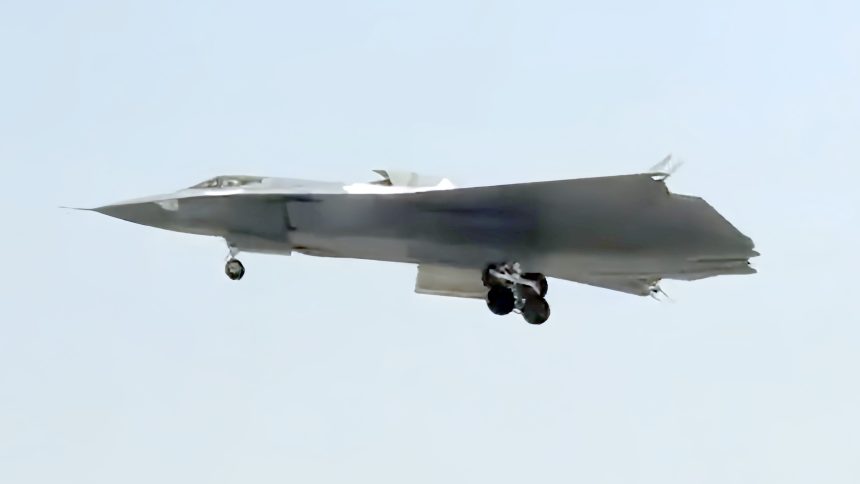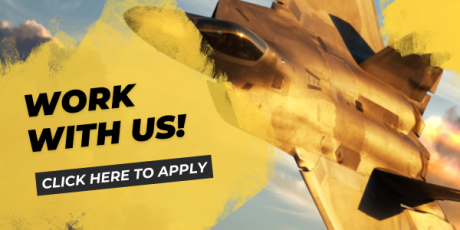The mysterious J-36 fighter can be seen flying low over an urban highway in China on final approach for landing.
On April 7, 2025, a new video surfaced online showcasing China’s enigmatic J-36 stealth fighter during one of its latest test flights. The short footage (just 6 seconds), filmed from a car, provides aviation enthusiasts and defense analysts with a close look into the aircraft’s design.
The J-36, referred to as China’s 6th generation aircraft, first got public attention with its maiden flight on Dec. 26, 2024 and, since then, it has been a subject of intrigue and speculation in the aerospace community. On the same day, another futuristic design from the Shenyang Aircraft Corporation (SAC), rumored to be the J-XX fighter and commonly referred to as the J-50, was captured in ground footage. The J-36 was accompanied by a twin-seater J-20S during its flight, while the second airframe was chased by a Chinese-made Flanker-derivative, either a J-11 or a J-16.
The newly circulated video captures the J-36 aircraft as it overflies the traffic on a Chinese urban highway during final approach for landing at the Chengdu Airframe Plant, located approximately 6 nautical miles to the northwest of Chengdu’s city center, in Sichuan province.
J-36 pic.twitter.com/PJ1Thqt4tZ
— Sweet Clay (@Clay_PLAPAP) April 7, 2025
Design and Development
The J-36’s design is notable for its tailless, flying-wing configuration. The trijet engine arrangement, with two engine intakes under the wings and a dorsally-mounted intake behind the cockpit, is a departure from conventional twin-engine setups seen in many contemporary fighters. This configuration may offer advantages in terms of thrust and redundancy. The aircraft’s underbelly appears to have space between the two landing gears, potentially housing internal weapons bays for large, long-range surface strike missiles. However, these bays have not yet been observed in an open position.
Here’s what we wrote about the type in our most recent article about the J-36:
One image, sourced from Chinese social media and shared on X by leading Chinese military aviation analyst Andreas Rupprecht, showed a rear-aspect view of the J-36, showing bright exhausts, similar to afterburners, from its three engine nozzles. […]
Existing and verified images of the J-36, which emerged since it was first reported, showed the aircraft being seemingly equipped with three flat nozzles, while this showed a roundish outlet. Possibly, this could be because of the powerful exhausts spreading outside either the flat nozzles or variable geometry nozzles.
The J-36 has two engine intakes under the wings, on the sides of the fuselage, and one dorsally-mounted intake behind the cockpit. The aircraft has a tailless, flying-wing configuration, with a twin-wheel nose landing gear, and tandem-wheeled main landing gears, like the Su-34 Fullback fighter-bomber.
Also, in the space between the two landing gears on the underbelly, the J-36 could house internal weapons bays for large long-range surface strike missiles. In the future, we might see them fully open, revealing their payload capacity and housing design, the same way the J-20’s weapon bays opened their doors for the first time to viewers during the 2018 edition of the Zhuhai Air Show.
The J-36’s latest side-aspect view also shows what appears to be a black and gray camouflage paint scheme. The bottom and rear view shots of the latest set of images show its split trailing edge control surfaces, both in the open and closed position, which act as air brakes, used to increase drag and slow down the aircraft. These air brakes and paint scheme were also clearly visible in the J-36’s Dec. 2024 revelation.
The J-36’s smooth design also suggests that it has a certain level of optimization for both aerodynamic efficiency and low visibility, leading to higher speed, and thus higher kinetic energy, that can be provided to missiles when launched, and a reduction of the chances of being tracked by anti-air radars and air-to-air missiles. Maneuverability and stability might be achieved by advanced flight control software and a new-generation of control laws algorithms.
So far, there have been no graphic renditioned videos of either the J-36/JH-XX or the J-XX on official platforms like CGTN, CCTV or military media wing, giving insight into how the aircraft is envisioned to perform. Generally, the official state outlets are believed to reflect the thinking of the PLA’s military planners or its aerospace industry.
The first aircraft – that assessments have mentioned could be a “regional bomber” with elementary capabilities of the under-development H-20 strategic bomber- was also designated as the JH-XX at the time. One post said the aircraft is powered by either the WS-10C turbofan engine or the supercruise-capable WS-15, meant to power all future production variants of the J-20 stealth fighter.
The WS-15 is believed to be the Chinese equivalent to the Pratt and Whitney F135 that powers the F-35 series of jets, or the Russian Saturn AL-41F1S turbofans that powers the Su-35S. The make of the JH-XX/J-36’s engines is however speculative at best, but it can be assumed that Chinese engineers would be working on adaptive cycle engines, similar to the U.S. industry’s efforts to have the next-generation power plant for its NGAD (Next-Generation Air Dominance Program).









